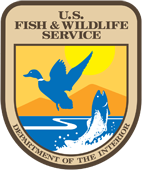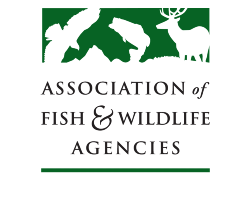Development of Consistent Policy and Law to Prevent the Translocation of Feral Swine
Strategic Priority
Capacity Building, Conservation Education, and Coordination of Conservation Policies - Coordination of Conservation Policies
Project Documents
Project Description
The willful or accidental introduction of feral swine into suitable habitats across North America is perhaps one of our most serious conservation issues. Inconsistencies in state policies and laws regarding the transport/translocation of feral swine undermine state agencies’ efforts to prevent expansion and reduce the impact of these animals. The AFWA Feral Swine Working Group has prioritized “Encourage uniform policies that prohibit the interstate movement of feral swine and translocation of feral swine.” Under this grant, WMI will work with our state and provincial partners to research the policies, regulations, and statutes (wildlife and agriculture) of all 50 states and adjacent Canadian provinces regarding the transport and translocation of feral swine. We will analyze the data to identify inconsistencies, gaps, and trends that hamper the ability of agencies to control the spread of feral swine. WMI will also assess the effectiveness of these policies, regulations, and statutes for their ability to effectively control the movement and spread of feral swine. Finally, WMI will develop recommendations for revisions to statutes, regulations, or policies to increase consistency and improve desired outcomes regarding feral swine control. A final report will provide these recommendations to all state and provincial partners.
Project Facts
- Organization Name: Wildlife Management Institute, Inc
- Organization Status: NGO classified as 501(c)(3)
- State: Washington, DC
- Obligation: $93,555
- Start Date: 01-01-2022
- End Date: 12-31-2022
Results
- This project was primarily funded by a competitive multistate grant from AFWA, with a supporting grant from the United States Department of Agriculture, Animal and Plant Health Inspection Service.
- Methods:
- First, we reviewed the literature on nationwide feral swine policy and regulations. Previous surveys conducted by the Southeast AFWA Wild Hog Working Group (SEAFWA-WHWG) and the Midwest AFWA ad-hoc Feral Swine Committee (MAFWA-FSC) informed the questionnaire used in this study.
- Those surveys evaluated regional policies and regulations for their respective jurisdictions and provided many of the questions used in this National survey. Prior to fielding, we tested the survey using 4 external reviewers and adjusted questions and flow as needed.
- Our intended survey population was 1) the State natural resource agency point person for feral swine in all 50 states and 2) the State Veterinarian for all 50 states, usually located in an agricultural or animal health agency. Three state natural resource agencies (Connecticut, Idaho, and New Hampshire) informed us that all matters concerning feral swine were handed over to the state agricultural agency; thus, the respective natural resource agencies were dropped from the survey. Our final survey population was 97 individuals, who all received a survey (Appendix 10).
- We emailed each member of our survey population, noting that a feral swine questionnaire would soon be arriving in their inbox. In that email, we also requested that recipients notify us if there was a more appropriate point of contact. As a result, we updated our database to reflect the current staffing situation for those states. With those updates in place, we administered the survey beginning on 25 August 2022.
- The email-based survey was administered using the Qualtrics survey platform. We contacted agency representatives up to 4 times, generally weekly, using a personalized email adjusted slightly with each attempt. We concluded the collection of survey information on 27 September 2022.
- We used the survey responses to guide a more in-depth look at each state's administrative statutes/codes and regulations. The official administrative code and regulations in each state were generally available online. Our priority in searching administrative codes and regulations was to obtain information for non-responding states, confirm survey responses, and augment survey results as needed. We concluded our systematic search by examining administrative codes and regulations in all 50 states.
- Survey Response:
- We received completed surveys from 78 of 97 individuals (80.4% response). Ultimately, we received at least one response from 47 of 50 states surveyed. Thirty-nine responses (of 47 surveyed) from State Fish and Wildlife agencies were received, compared to 33 responses (of 50 surveyed) from State Agricultural or Animal Health agencies. We received complete information (both agencies or one response if only one agency was surveyed) from 32 states (64%).


